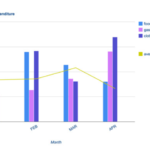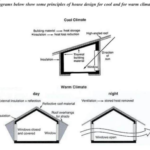The diagram illustrates different stages in the process of manufacturing bricks from the
digging step to delivery.
At the beginning of the process, clay is dug from the ground. Then, the clay is put through
a metal grid, and it passes onto a roller where it is mixed with sand and water. After that,
the clay can be shaped into bricks in two ways: either it is put in a mould, or a wire cutter
is used.
At the fourth stage in the process, the clay bricks are placed in a drying oven for one to
two days. Next, the bricks are heated in a kiln at a moderate temperature (200 – 900
degrees Celsius) and then at a high temperature (up to 1300 degrees Celsius), before
spending two to three days in a cooling chamber. Finally, the finished bricks are packaged
and delivered to be sold in the market.
Step 1: Band Score Analysis
Estimated Band Score: 7.5
| Criteria | Score | Comments |
|---|---|---|
| Task Achievement | 7.5 | All stages are described logically and clearly; minor areas could be more detailed (e.g., mentioning that water and sand are added before shaping). |
| Coherence & Cohesion | 7.5 | Good sequence with logical connectors (“Then,” “After that,” “Finally”); could use even smoother transitions at times. |
| Lexical Resource | 7.0 | Range is sufficient but could benefit from slightly more varied vocabulary and synonyms (e.g., repeating “clay” and “bricks” often). |
| Grammatical Range & Accuracy | 8.0 | Very few grammatical mistakes; mostly complex sentences are used accurately. |
Band 7–8
The diagram depicts the various stages involved in the manufacturing of bricks, beginning with the extraction of clay and ending with the delivery of the finished products.
Initially, clay is dug from the ground and passed through a metal grid, after which it moves onto a roller. At this point, sand and water are added to the clay. Subsequently, the clay is either molded manually or cut into bricks using a wire cutter.
Following this, the newly shaped bricks are placed in a drying oven for one to two days. Once dried, they undergo heating in a kiln, first at moderate temperatures (ranging from 200 to 900 degrees Celsius), and then at a much higher temperature, up to 1300 degrees Celsius. Afterward, the bricks are transferred to a cooling chamber where they remain for two to three days. Finally, the bricks are packaged and transported for sale.
Word count: 163
Band 9
The diagram illustrates the process of brick production, detailing each step from clay extraction to final delivery.
The process begins when clay is excavated from the ground and filtered through a metal grid, falling onto a roller. Here, it is combined with sand and water. The mixture is then shaped into bricks either by using a wire cutter or by placing it into molds.
The formed bricks are subsequently dried in an oven for one to two days. After drying, they are fired in a kiln, initially at moderate temperatures (200–900°C) and then at higher temperatures reaching up to 1300°C. Once fired, the bricks are cooled in a chamber for two to three days. The final stage involves packaging the bricks and delivering them to retailers.
Word count: 148
Comparison Table
| Aspect | Band 7–8 Version | Band 9 Version |
|---|---|---|
| Vocabulary | Good, slightly repetitive | Very precise and varied |
| Structure | Clear steps, minor redundancy | Very smooth and efficient |
| Data Coverage | Thorough | Thorough and concise |
| Cohesion | Good transitions | Excellent transitions with linking phrases |
Sentence Comparisons
| Original | Improved |
|---|---|
| “clay is put through a metal grid, and it passes onto a roller” | “clay is filtered through a metal grid and moves onto a roller” |
| “clay can be shaped into bricks” | “the mixture is shaped into bricks” |
| “the bricks are heated in a kiln at a moderate temperature” | “they are fired in a kiln, initially at moderate temperatures” |
Grammar and Spelling Mistakes
| Mistake | Correction | Explanation |
|---|---|---|
| “mixed with sand and water. After that, the clay can be shaped…” | Better as: “mixed with sand and water before being shaped…” | Reduces repetition and improves sentence flow |
| “before spending two to three days” | Slightly unclear subject (“the bricks spend”) | Could be smoother: “where they remain for 2–3 days” |
Vocabulary Repetition
| Repeated Word | Suggested Alternatives |
|---|---|
| “clay” | mixture, material, substance |
| “bricks” | blocks, finished products (sparingly) |
| “placed” | transferred, moved, inserted |
IELTS Writing Task 1 Exercises
Fill in the blanks using the words: (filtered, excavated, molded, fired, transported, chamber)
- First, clay is __________ from the ground.
→ excavated - The clay is then __________ through a metal grid.
→ filtered - The material is __________ into brick shapes either by molds or by a wire cutter.
→ molded - After drying, bricks are __________ in a kiln at high temperatures.
→ fired - The cooled bricks are then __________ to markets.
→ transported - Bricks are cooled in a special __________ before being packaged.
→ chamber


